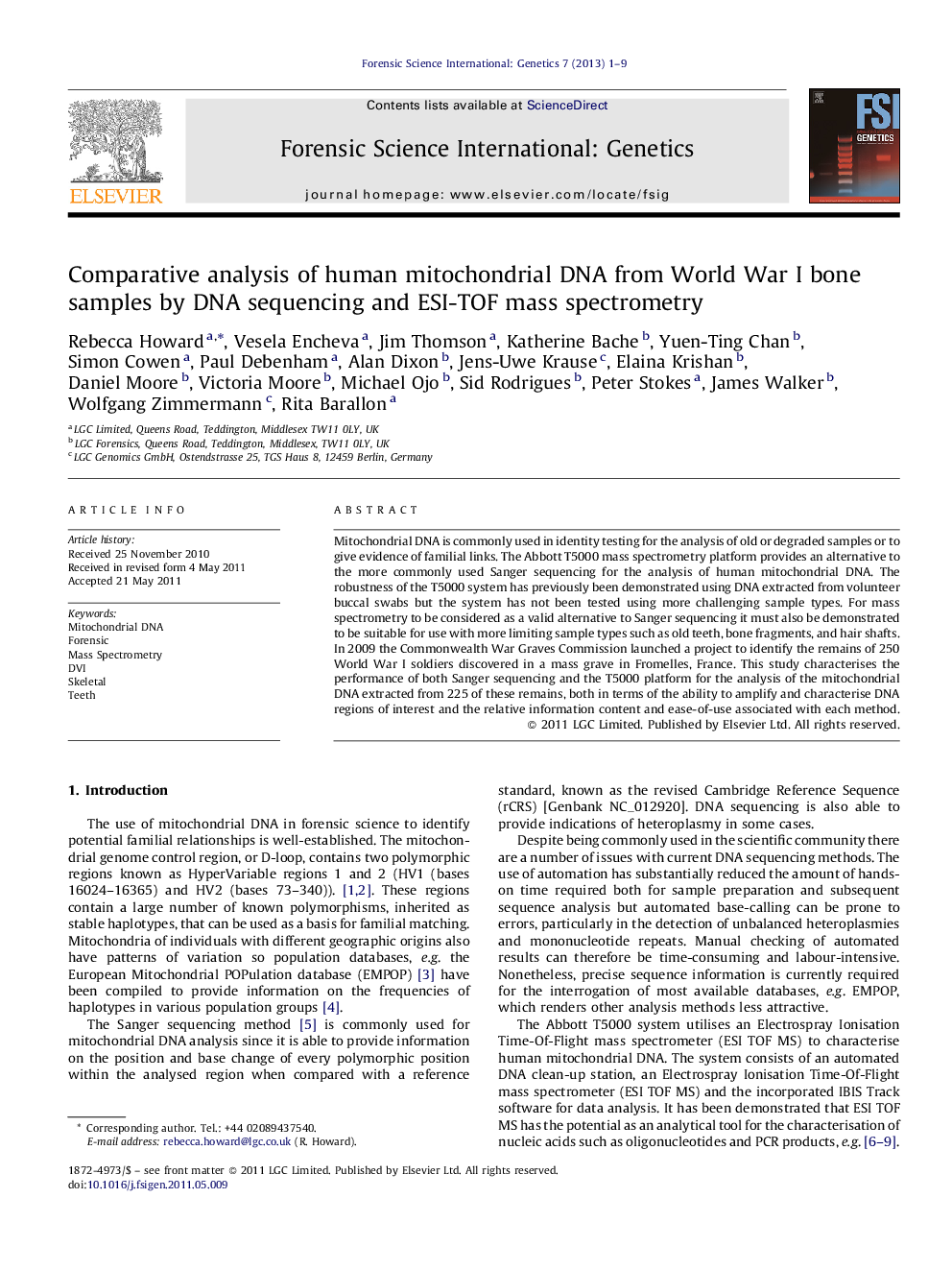| Article ID | Journal | Published Year | Pages | File Type |
|---|---|---|---|---|
| 10254007 | Forensic Science International: Genetics | 2013 | 9 Pages |
Abstract
Mitochondrial DNA is commonly used in identity testing for the analysis of old or degraded samples or to give evidence of familial links. The Abbott T5000 mass spectrometry platform provides an alternative to the more commonly used Sanger sequencing for the analysis of human mitochondrial DNA. The robustness of the T5000 system has previously been demonstrated using DNA extracted from volunteer buccal swabs but the system has not been tested using more challenging sample types. For mass spectrometry to be considered as a valid alternative to Sanger sequencing it must also be demonstrated to be suitable for use with more limiting sample types such as old teeth, bone fragments, and hair shafts. In 2009 the Commonwealth War Graves Commission launched a project to identify the remains of 250 World War I soldiers discovered in a mass grave in Fromelles, France. This study characterises the performance of both Sanger sequencing and the T5000 platform for the analysis of the mitochondrial DNA extracted from 225 of these remains, both in terms of the ability to amplify and characterise DNA regions of interest and the relative information content and ease-of-use associated with each method.
Related Topics
Life Sciences
Biochemistry, Genetics and Molecular Biology
Genetics
Authors
Rebecca Howard, Vesela Encheva, Jim Thomson, Katherine Bache, Yuen-Ting Chan, Simon Cowen, Paul Debenham, Alan Dixon, Jens-Uwe Krause, Elaina Krishan, Daniel Moore, Victoria Moore, Michael Ojo, Sid Rodrigues, Peter Stokes, James Walker,
